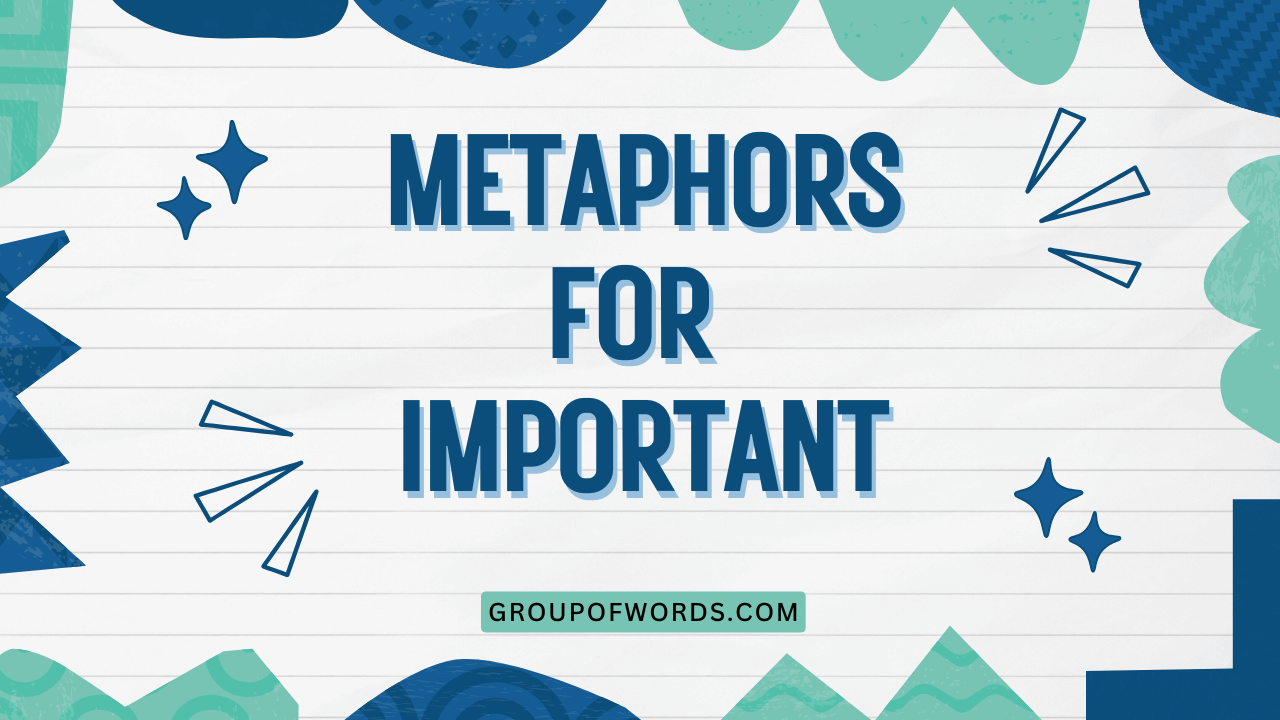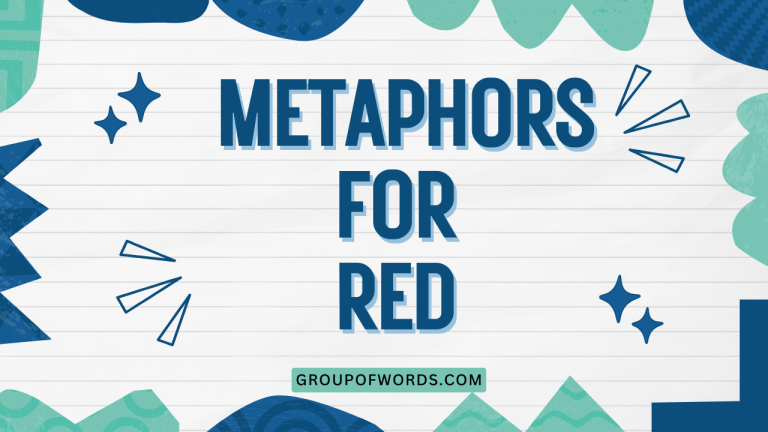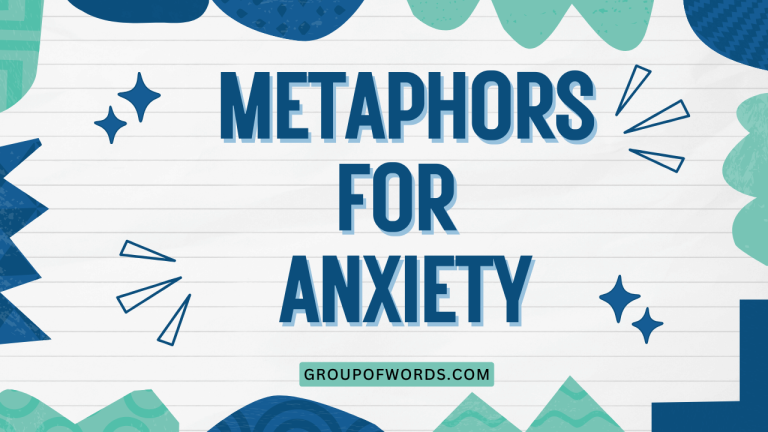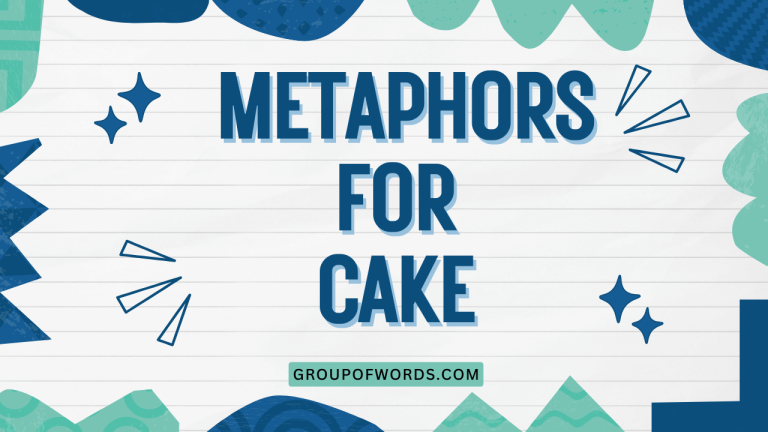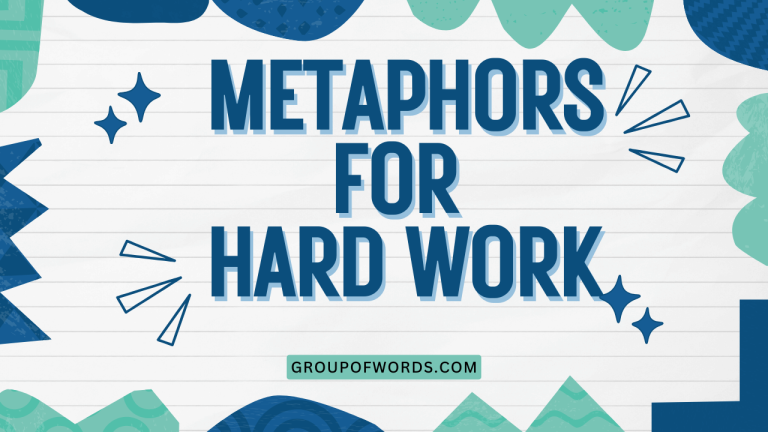Metaphors for Important: Expressing Significance in English
Understanding how to express the concept of “importance” in English goes beyond simply using the word “important.” Metaphors offer a rich and nuanced way to convey varying degrees of significance, adding depth and impact to your communication. This article explores a wide range of metaphors used to describe importance, providing clear definitions, numerous examples, and practical exercises to help you master this crucial aspect of English vocabulary.
Table of Contents
- Introduction
- Definition of Metaphor and Importance
- Structural Breakdown of Metaphors for Importance
- Types and Categories of Metaphors for Importance
- Examples of Metaphors for Importance
- Usage Rules for Metaphors of Importance
- Common Mistakes When Using Metaphors for Importance
- Practice Exercises
- Advanced Topics
- FAQ
- Conclusion
Introduction
Effectively conveying the significance of something is a cornerstone of clear and impactful communication. While adjectives like “important” and “significant” are useful, they can sometimes lack the emotional resonance and depth that a well-chosen metaphor provides.
Metaphors allow us to tap into shared understandings and create vivid images that resonate with our audience. This article will guide you through a diverse range of metaphors for importance, equipping you with the tools to express significance with greater precision and artistry.
Whether you are a student, a professional, or simply someone looking to enhance their communication skills, this guide will prove invaluable.
Definition of Metaphor and Importance
A metaphor is a figure of speech that directly compares two unrelated things. Unlike similes, which use “like” or “as” to make a comparison, metaphors state that one thing *is* another, implying a shared quality or characteristic. This comparison isn’t literal, but rather suggestive and evocative, allowing for a deeper understanding or appreciation of the subject.
Importance, in this context, refers to the quality of being significant, valuable, or consequential. Something that is important carries weight, has a strong influence, or occupies a central position. The degree of importance can vary greatly, ranging from minor significance to paramount importance.
When we use metaphors to express importance, we’re leveraging the power of figurative language to highlight the gravity, impact, or value of something. This allows us to communicate its significance in a more engaging and memorable way.
Structural Breakdown of Metaphors for Importance
Metaphors for importance typically follow a basic structure: they link the concept being described (the *topic*) to another, more concrete concept (the *vehicle*) that embodies the desired quality of significance. This link creates an implicit comparison, allowing the audience to understand the topic’s importance through the lens of the vehicle.
For example, in the metaphor “This decision is the cornerstone of our strategy,” the *topic* is “this decision,” and the *vehicle* is “cornerstone.” The comparison implies that the decision is fundamental and essential, just as a cornerstone is to a building. The effectiveness of a metaphor depends on the audience’s familiarity with the vehicle and the clarity of the implied connection.
The strength of a metaphor lies in its ability to evoke a strong image or feeling. Well-chosen metaphors can transform abstract concepts into tangible and relatable ideas.
This is particularly useful when explaining complex or nuanced ideas.
Types and Categories of Metaphors for Importance
Metaphors for importance can be categorized based on the underlying concept they evoke. Here are some common categories:
Weight Metaphors
These metaphors associate importance with heaviness or burden. They suggest that something important carries a significant responsibility or impact.
Centrality Metaphors
These metaphors equate importance with being at the center or core of something. They emphasize that the subject is essential and indispensable.
Value Metaphors
These metaphors link importance to monetary or intrinsic value. They highlight the worth or significance of the subject.
Size Metaphors
These metaphors associate importance with largeness or magnitude. They suggest that the subject has a significant impact or scope.
Urgency Metaphors
These metaphors convey importance through a sense of immediacy or pressing need. They emphasize the critical and time-sensitive nature of the subject.
Foundation Metaphors
These metaphors link importance with being a base or structure. They emphasize that the subject is fundamental and essential for support.
Impact Metaphors
These metaphors link importance with the effect or influence something has. They emphasize that the subject is powerful and can cause ripple effects.
Examples of Metaphors for Importance
Here are examples of metaphors for importance, organized by category:
Weight Metaphor Examples
Weight metaphors are often used to describe a responsibility or a decision of great consequence. The feeling of weight conveys the burden and impact associated with the important matter.
The table below provides 30 examples of weight metaphors used to describe importance.
| Metaphor | Explanation |
|---|---|
| The weight of the world is on his shoulders. | He carries a heavy burden of responsibility. |
| This decision carries a lot of weight. | The decision has significant consequences. |
| Her opinion holds a lot of weight in this company. | Her opinion is highly valued and influential. |
| The responsibility weighed heavily on her. | She felt burdened by the responsibility. |
| His words carried considerable weight. | His words were impactful and influential. |
| This is a heavy matter to consider. | This is a serious and important issue. |
| The issue is a weighty one. | The issue is significant and complex. |
| She felt the crushing weight of expectation. | She felt overwhelmed by the pressure to succeed. |
| His testimony added weight to the prosecution’s case. | His testimony strengthened the prosecution’s case. |
| The evidence lends weight to this theory. | The evidence supports and strengthens this theory. |
| He bore the heavy weight of leadership. | He shouldered the responsibilities of leadership. |
| The burden of proof rests on the plaintiff. | The plaintiff must provide convincing evidence. |
| This adds significant weight to the argument. | This strengthens the argument considerably. |
| The outcome hinges on this weighty decision. | The outcome depends on this important decision. |
| Her silence spoke volumes, adding weight to the accusation. | Her silence implied agreement, making the accusation more credible. |
| The pressure weighed down on the team. | The team felt burdened by the expectations. |
| This legislation carries a heavy cost. | This legislation has significant financial implications. |
| The gravity of the situation weighed on their minds. | They were deeply concerned about the seriousness of the situation. |
| His past mistakes cast a long shadow, adding weight to the present challenges. | His past mistakes made the current challenges more difficult to overcome. |
| The company’s reputation hangs in the balance, carrying a heavy weight of responsibility. | The company’s reputation is at risk, and they must act responsibly. |
| The problem is loaded with complexities. | The problem is difficult to resolve due to its many aspects. |
| The future of the project is burdened by uncertainties. | The project’s success is threatened by many risks. |
| The proposal is laden with potential benefits. | The proposal offers many advantages. |
| The case is pregnant with implications for future policy. | The case will have a significant effect on future policy. |
| This report is heavy with data. | This report has a large amount of data. |
| The atmosphere was thick with anticipation. | There was a great deal of excitement in the air. |
| The air was heavy with sadness after the news. | There was great grief after the news. |
| The silence was thick with unspoken words. | There was noticeable tension and unresolved conflict. |
| The task ahead is cumbersome. | The task is complex and difficult to handle. |
| The investigation is bogged down by complexities. | The investigation can’t progress because of the difficulties. |
Centrality Metaphor Examples
Centrality metaphors underscore the importance of something by placing it at the heart of an issue, project, or system. This emphasizes its critical role and indispensability.
The table below presents 30 examples of centrality metaphors used to describe importance.
| Metaphor | Explanation |
|---|---|
| This is the heart of the matter. | This is the most important aspect of the issue. |
| Education is the cornerstone of a successful society. | Education is the fundamental building block of a thriving society. |
| Communication is the key to a strong relationship. | Communication is essential for a healthy relationship. |
| This data is the core of our analysis. | This data is central to our understanding. |
| Honesty is the bedrock of trust. | Honesty is the foundation upon which trust is built. |
| This project is the linchpin of our strategy. | This project is crucial for the success of our strategy. |
| He is the central figure in this investigation. | He is the main person of interest in this investigation. |
| This concept is pivotal to understanding the theory. | This concept is crucial for grasping the theory. |
| This decision is at the epicenter of the crisis. | This decision is the most important factor in the crisis. |
| Teamwork is at the center of our success. | Teamwork is essential for our achievements. |
| This component is integral to the system’s function. | This component is essential for the system to work properly. |
| She is the axis around which the company revolves. | She is central to the company’s operations. |
| This document is the nucleus of the agreement. | This document contains the essential terms of the agreement. |
| The family is the hub of their social life. | The family is the center of their social activities. |
| This meeting is the focal point of the week. | This meeting is the most important event of the week. |
| She is the anchor of the team. | She is the stable and reliable member of the team. |
| This exhibition is the centerpiece of the festival. | This exhibition is the main attraction of the festival. |
| The client is the focus of the company’s efforts. | The company prioritizes the client’s needs. |
| This ingredient is the key to the recipe’s success. | This ingredient is crucial for the recipe to turn out well. |
| This law is the cornerstone of the new policy. | This law is the foundation of the new policy. |
| The community center is the heart of the neighborhood. | The community center is the central gathering place for the neighborhood. |
| This evidence is central to the case. | This evidence is essential for proving the case. |
| The project is the centerpiece of their portfolio. | The project is the most prominent work in their portfolio. |
| He is the focal point of the investigation. | He is the main focus of the investigation. |
| She is the driving force behind the initiative. | She is the person who provides the impetus for the initiative. |
| The client’s needs are at the forefront of our minds. | The client’s needs are our primary concern. |
| The issue is at the forefront of the debate. | The issue is the main point of discussion. |
| He is at the helm of the organization. | He is in charge of the organization. |
| The manager is at the forefront of innovation. | The manager is leading the way in innovation. |
Value Metaphor Examples
Value metaphors highlight the worth and significance of something, often comparing it to precious materials or essential resources. This underscores its importance and irreplaceability.
The table below includes 20 examples of value metaphors used to describe importance.
| Metaphor | Explanation |
|---|---|
| Time is money. | Time is a valuable resource. |
| Honesty is the best policy. | Honesty is the most valuable approach. |
| This information is gold. | This information is extremely valuable. |
| Her advice was priceless. | Her advice was invaluable. |
| This opportunity is a gem. | This opportunity is rare and valuable. |
| His contribution was invaluable to the project. | His contribution was essential and highly appreciated. |
| Their support is worth its weight in gold. | Their support is extremely valuable. |
| This scholarship is a golden ticket to success. | This scholarship provides an excellent opportunity for advancement. |
| This painting is a treasure. | This painting is highly valuable and cherished. |
| His experience is a valuable asset to the team. | His experience is a significant advantage for the team. |
| These documents are a goldmine of information. | These documents contain a wealth of valuable information. |
| Their reputation is their most valuable asset. | Their good reputation is their most important possession. |
| This technology is a game changer. | This technology will have a significant impact. |
| His insights are pure genius. | His insights are exceptionally brilliant. |
| His creativity is a rare jewel. | His creativity is precious and uncommon. |
| Her talent is a diamond in the rough. | Her talent is valuable but needs development. |
| The company’s brand is a valuable commodity. | The company’s brand is a valuable asset. |
| This skill is a valuable tool in the marketplace. | This skill is highly sought after by employers. |
| This book is a treasure trove of knowledge. | This book contains a great deal of valuable information. |
| The company’s customer base is its most valuable resource. | The company’s customer relationships are vital for its success. |
Size Metaphor Examples
Size metaphors emphasize the importance of something by associating it with largeness or magnitude. This suggests a significant impact or scope.
The table below shows 20 examples of size metaphors used to describe importance.
| Metaphor | Explanation |
|---|---|
| This is a big deal. | This is very important. |
| The impact was enormous. | The impact was very significant. |
| This is a monumental achievement. | This is a very significant accomplishment. |
| The consequences are far-reaching. | The consequences have a wide-ranging impact. |
| This is a landmark decision. | This is a very important and influential decision. |
| This event cast a long shadow on the future. | This event had a lasting impact on the future. |
| The problem is growing exponentially. | The problem is increasing rapidly. |
| This is a giant leap forward. | This is a significant advancement. |
| The scale of the disaster is overwhelming. | The extent of the disaster is immense. |
| This project has a massive scope. | This project is very large and complex. |
| The implications are global. | The implications affect the entire world. |
| This is a watershed moment. | This is a turning point in history. |
| The ramifications are widespread. | The consequences are felt across a broad area. |
| This undertaking is ambitious in scale. | This project is large and complex. |
| This is a sweeping change. | This is a major and comprehensive change. |
| The problem is ballooning out of control. | The problem is growing rapidly and becoming unmanageable. |
| The influence of this leader is vast. | This leader has a significant impact on many people. |
| This discovery has opened up a world of possibilities. | This discovery has created many new opportunities. |
| This is a global phenomenon. | This is an event that is happening worldwide. |
| The ripples of this event will be felt for years to come. | The effects of this event will be long-lasting. |
Urgency Metaphor Examples
Urgency metaphors convey the importance of something by emphasizing its time-sensitive nature. They highlight the need for immediate action and attention.
The table below lists 20 examples of urgency metaphors used to describe importance.
| Metaphor | Explanation |
|---|---|
| Time is of the essence. | It is crucial to act quickly. |
| This is a matter of life and death. | This is extremely urgent and serious. |
| The clock is ticking. | There is limited time remaining. |
| We’re racing against time. | We must act quickly to achieve our goal. |
| There’s no time to lose. | We must start immediately. |
| This is a pressing issue. | This issue requires immediate attention. |
| We’re in a critical situation. | This situation is serious and requires immediate action. |
| This is an emergency. | This situation is urgent and requires immediate help. |
| The situation is deteriorating rapidly. | The situation is getting worse quickly. |
| We’re on a tight schedule. | We have very little time to complete the task. |
| This requires immediate action. | We must act without delay. |
| This is a burning issue. | This is a very urgent and important issue. |
| The window of opportunity is closing. | The chance to act is disappearing. |
| This is a now-or-never situation. | This is the last chance to act. |
| We’re walking a tightrope. | We’re in a precarious situation where one wrong move could have serious consequences. |
| This is a ticking time bomb. | This situation is likely to explode if not addressed quickly. |
| We’re playing with fire. | We’re taking a dangerous risk. |
| This is a last-ditch effort. | This is our final attempt to achieve success. |
| The crisis is escalating quickly. | The crisis is becoming more severe rapidly. |
| We must act before it’s too late. | We must take action before the opportunity is lost. |
Foundation Metaphor Examples
Foundation metaphors emphasize importance by likening something to a base or structure that supports other things. This highlights its fundamental and essential role.
The table below lists 20 examples of foundation metaphors used to describe importance.
| Metaphor | Explanation |
|---|---|
| This is the foundation of our success. | This is the basis upon which our success is built. |
| Education is the cornerstone of society. | Education is the fundamental element of a thriving society. |
| Trust is the bedrock of any relationship. | Trust is the essential foundation for a strong relationship. |
| This principle is the basis of our argument. | This principle is the foundation upon which our argument rests. |
| The framework of the agreement is solid. | The structure of the agreement is strong and well-defined. |
| This law is the pillar of the new system. | This law is a crucial support for the new system. |
| This concept forms the groundwork for further research. | This concept provides the initial basis for further study. |
| The scaffolding of the project is complete. | The structural support for the project is in place. |
| This is the building block of our strategy. | This is the fundamental element of our strategy. |
| This data provides the underpinnings of our conclusion. | This data supports and justifies our conclusion. |
| This theory lays the groundwork for future discoveries. | This theory provides the foundation for future advances. |
| This is the infrastructure that supports our growth. | This is the essential system that allows us to expand. |
| This partnership is the bedrock of our collaboration. | This partnership forms the solid foundation of our collaboration. |
| This methodology provides the architecture for the project. | This methodology outlines the structure and design of the project. |
| The constitution is the backbone of the legal system. | The constitution provides the fundamental principles of the legal system. |
| This research is the cornerstone of medical advancement. | This research represents the fundamental building block of medical progress. |
| The company’s values are the bedrock of its culture. | The company’s values are the foundation of its culture. |
| The course provides the scaffolding for future learning. | The course provides the support for future learning. |
| This technology is the infrastructure of the digital age. | This technology is the underlying system of the digital age. |
| This discovery is the foundation for new treatments. | This discovery provides the basis for new therapies. |
Impact Metaphor Examples
Impact metaphors highlight how an action, event, or decision influences those around it. This underscores its importance and the degree of influence it wields.
The table below gives 20 examples of impact metaphors used to describe importance.
| Metaphor | Explanation |
|---|---|
| This decision will have a ripple effect. | This decision will have far-reaching consequences. |
| This event changed the landscape of the industry. | This event fundamentally altered the industry. |
| His speech sparked a revolution. | His speech ignited widespread change. |
| This discovery opened Pandora’s Box. | This discovery unleashed unforeseen consequences. |
| This action set off a chain reaction. | This action triggered a series of events. |
| The scandal sent shockwaves through the community. | The scandal had a profound impact on the community. |
| This policy will have a seismic impact on the economy. | This policy will have a massive effect on the economy. |
| Their actions cast a long shadow on their reputation. | Their actions had a lasting negative impact on their reputation. |
| This innovation is a game changer. | This innovation will significantly alter the way things are done. |
| The news hit like a bombshell. | The news had a sudden and devastating impact. |
| His words resonated with the audience. | His words had a deep and meaningful impact on the audience. |
| This event left an indelible mark on history. | This event had a permanent and unforgettable impact on history. |
| The crisis triggered a domino effect. | The crisis caused a series of related events to occur. |
| This decision will shape the future. | This decision will have a significant influence on what happens in the future. |
| This policy is a catalyst for change. | This policy will accelerate the process of change. |
| The company’s success has spawned numerous imitators. | The company’s success has inspired many others to copy its methods. |
| The discovery unleashed a wave of innovations. | The discovery led to a rapid succession of new inventions. |
| The event ignited a firestorm of controversy. | The event sparked a great deal of heated debate. |
| The scandal tarnished the company’s image. | The scandal damaged the company’s reputation. |
| The leader’s vision transformed the organization. | The leader’s vision fundamentally changed the organization. |
Usage Rules for Metaphors of Importance
Using metaphors effectively requires sensitivity to context and audience. Here are some guidelines:
- Clarity: Choose metaphors that are easily understood by your audience. Avoid obscure or overly complex comparisons.
- Relevance: Ensure the metaphor is relevant to the topic and accurately reflects the intended meaning.
- Consistency: Avoid mixing metaphors within the same sentence or paragraph, as this can create confusion.
- Appropriateness: Consider the tone and formality of the situation. Some metaphors are more appropriate for informal settings than formal ones.
- Originality: While common metaphors can be effective, strive to use fresh and original comparisons to make your communication more engaging.
It’s important to remember that metaphors are tools, and like any tool, they can be misused. Overusing metaphors or using them inappropriately can weaken your message rather than strengthen it.
Common Mistakes When Using Metaphors for Importance
One common mistake is using mixed metaphors. For example, saying “We need to nip this problem in the bud before it snowballs into a crisis” combines two unrelated images (nipping a bud and a snowball rolling downhill) and creates a confusing and illogical picture.
Another mistake is using clichéd metaphors. Overused metaphors like “tip of the iceberg” or “needle in a haystack” can sound stale and unoriginal. While they might be easily understood, they lack impact.
Finally, using inappropriate metaphors can be detrimental. A metaphor that is too informal, too technical, or culturally insensitive can alienate your audience and undermine your credibility.
Here are some examples of common mistakes and their corrections:
| Incorrect | Correct | Explanation |
|---|---|---|
| This project is the cornerstone of our strategy, and it’s also the low-hanging fruit. | This project is the cornerstone of our strategy. | Avoid mixing metaphors. Stick to one image. |
| This is just the tip of the iceberg. | This is just the beginning of a much larger problem. | Avoid clichés. Use a more original expression. |
| This decision is a real ball buster. | This decision is very challenging. | Use appropriate language for the context. Avoid offensive or overly informal metaphors. |
Practice Exercises
Test your understanding of metaphors for importance with these exercises:
Exercise 1: Identify the Metaphor
Identify the metaphor in each sentence and explain what type of importance it conveys (e.g., weight, centrality, value, size, urgency, foundation, impact).
| Question | Answer |
|---|---|
| 1. This agreement is the cornerstone of our partnership. | Metaphor: Cornerstone; Type: Foundation |
| 2. Time is of the essence in this situation. | Metaphor: Time is of the essence; Type: Urgency |
| 3. Her advice was worth its weight in gold. | Metaphor: Worth its weight in gold; Type: Value |
| 4. The weight of responsibility is on your shoulders. | Metaphor: Weight of responsibility; Type: Weight |
| 5. This decision will have a ripple effect on the entire company. | Metaphor: Ripple effect; Type: Impact |
| 6. This is a landmark decision for our organization. | Metaphor: Landmark decision; Type: Size |
| 7. Honesty is the bedrock of any successful relationship. | Metaphor: Bedrock; Type: Foundation |
| 8. This issue is a ticking time bomb. | Metaphor: Ticking time
bomb; Type: Urgency |
Exercise 2: Fill in the Blank
Complete each sentence with an appropriate metaphor for importance.
- This project is the __________ of our efforts.
- His contribution was __________ to the team’s success.
- We are __________ against time to meet the deadline.
Exercise 3: Create Your Own Metaphor
Create your own original metaphor to describe the importance of education. What image or comparison can you use to highlight its significance?
Advanced Topics
For a deeper understanding of metaphors for importance, consider exploring these advanced topics:
- Cognitive Metaphor Theory: This theory explores how metaphors shape our thinking and understanding of abstract concepts.
- Cultural Variations in Metaphors: Different cultures may use different metaphors to express importance, reflecting their unique values and perspectives.
- The Use of Metaphors in Rhetoric and Persuasion: Metaphors can be powerful tools for persuasion, influencing people’s beliefs and actions.
Understanding these advanced topics can help you use metaphors with greater sophistication and effectiveness.
FAQ
Why use metaphors when I can just say “important”?
Metaphors add depth, nuance, and emotional resonance to your communication. They make your message more engaging and memorable.
How do I avoid using clichés?
Read widely, pay attention to language, and strive to come up with original comparisons. Think about the specific qualities you want to emphasize and find fresh ways to express them.
Can I use more than one metaphor in a sentence?
It’s generally best to avoid using multiple metaphors in a single sentence, as this can create confusion. However, you can use a series of related metaphors to build a more complex and evocative image.
Conclusion
Mastering the art of using metaphors for importance is a valuable skill that can enhance your communication in countless ways. By understanding the different types of metaphors, following usage rules, and avoiding common mistakes, you can express significance with greater clarity, impact, and originality.
So, embrace the power of figurative language and unlock the full potential of your words.
